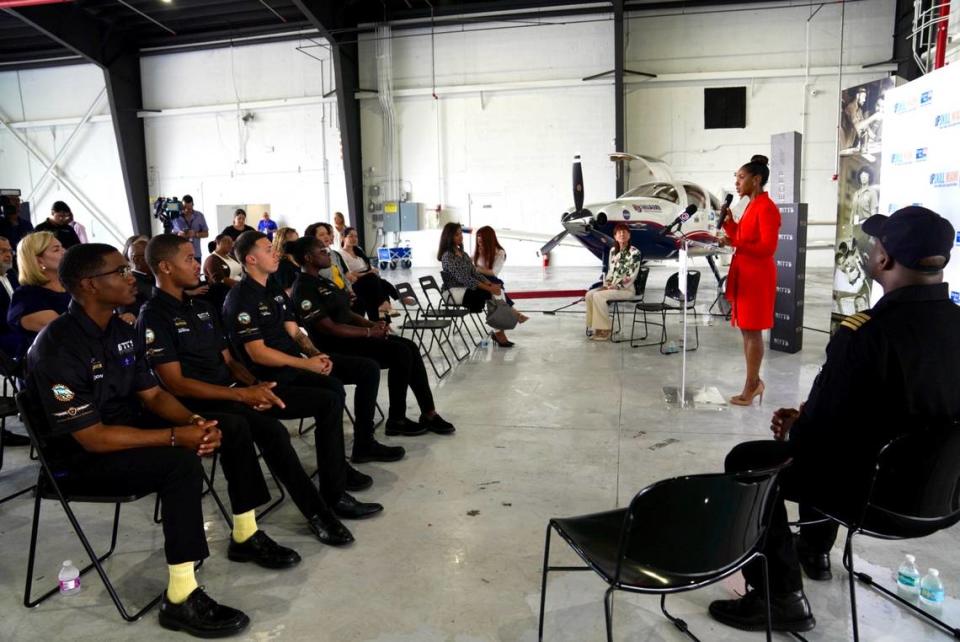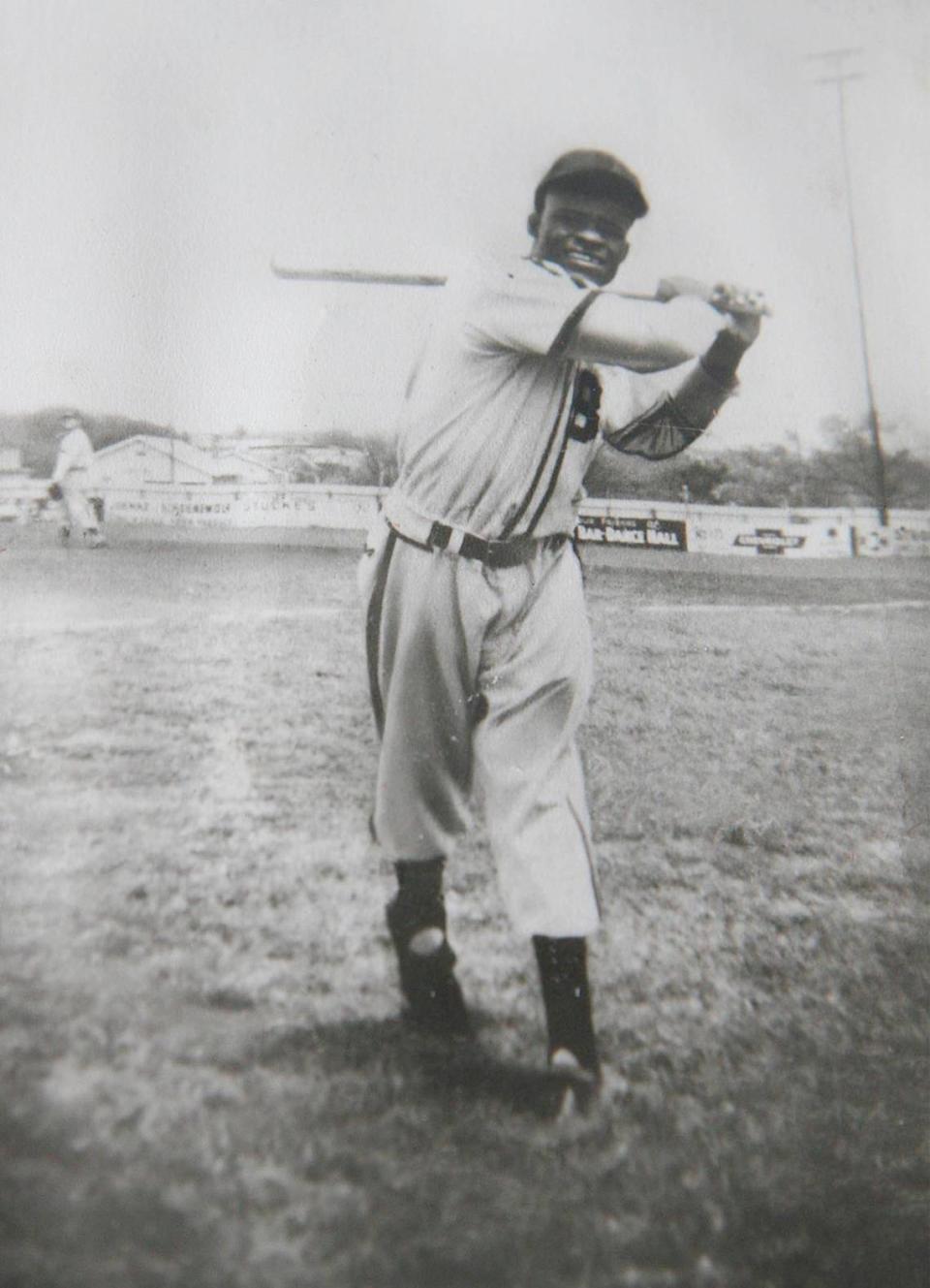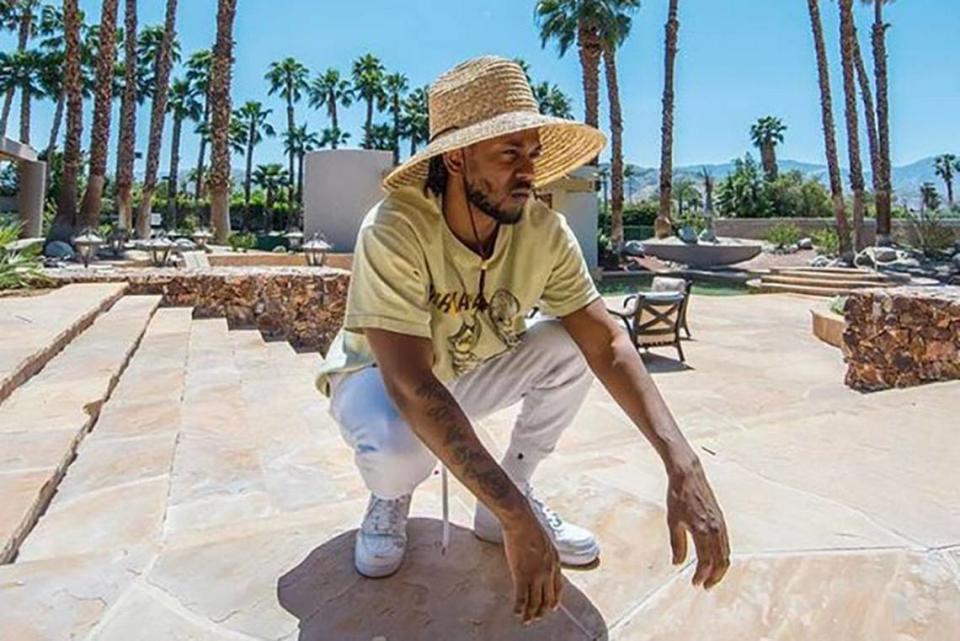The 44 Percent: Goombay Festival, aviation school, Negro League recognition
When my Dad got home from work, he used to typically have the same response about how his day went. He would say, “It’s just another day in paradise.” It could be pouring rain outside or a pleasant summer day and he would have the same response.
One of the enduring elements of Black life is the capacity and realization that you’re going to make it beyond all odds. Across regions, social classes and other differences, we have a determination to persevere. The Goombay Festival encompasses what that looks like for Bahamian immigrants and descendants in Coconut Grove. And Jamaican pilot Barrington Irving’s commitment to use his flight experience to uplift local young people of color also reflects that tenacity to succeed.
With patience, we laugh, we cry, but make no mistake: We always keep things moving.
INSIDE THE 305
‘That was life.’ Why Goombay in the Grove will be added to the Library of Congress:

Herald reporter C. Isaiah Smalls II reported on Coconut Grove’s long-running celebration of Black life and how the festival will be documented by the Library of Congress.
Frederica Simmons Brown never thought she’d see white people living on her side of the neighborhood.
After all, the 92-year-old Coconut Grove native grew up in a different era, one where the realities of Jim Crow shaped everyday life.
These days, the Grove is also home to modern million-dollar “sugar cubes” and coffee shops that often diverge from the area’s Bahamian roots. But as Brown reminisced about the old days from the porch of her light green bungalow that was built in 1950, there was one enduring part of the Black Grove’s legacy that brought a smile to her face: the Goombay Festival.
“A lot of us couldn’t afford to go to the Bahamas because the prices were too high,” Brown said. “It brought Bahamian culture to us.”
Goombay provided the opportunity for the Grove’s rich Bahamian community to connect with their heritage. That’s why when the three-day festival resumes May 31, it will be documented by members of the Florida International University community who will build a collection that will be housed in the Library of Congress American Folklife Center.
Earning less than $35K and interested in aviation? This Miami training program can help

This week, Jamaica native and Florida Memorial University graduate Barrington Irving partnered his aviation school with United Way Miami. Local residents of color will now be supported by United Way in pursuing lucrative aviation careers that can change their lives.
When he was still a kid, Florida Memorial University graduate Barrington Irving met a Black man who was wearing a fancy watch, a sharp blazer and slacks. When Irving asked what his job was, the man said he was a pilot. The nice clothes were his uniform.
Irving immediately knew that he wanted to be a pilot when he grew up.
With a tenacity for learning, Irving found success in the aviation industry. He not only became a pilot as an adult but also set two records in 2007 when he became both the youngest person and the first Black pilot to fly solo around the world. In 2023, he started a technical training school in Opa-locka to help prepare young people for careers in aviation.
At an event Tuesday, United Way Miami announced a partnership with his Barrington Irving Technical Training School at the Opa-locka Executive Airport. The career training program offers 12- to 16-week courses and targets people of color, female heads of household, veterans, youth ages 18 to 24, and teens aging out of foster care.
OUTSIDE THE 305
Josh Gibson, Satchel Paige and the unsung baseball stars of the Negro Leagues now take center stage

The Negro League received long overdue credit this week when statistics from its games were finally included in Major League Baseball statistics. NBC’s Greg Rosenstein wrote about what led to this decision and what it means.
The all-time statistical leaders in baseball underwent a dramatic shake-up on Wednesday after MLB’s monumental decision to include Negro League players in its historical record.
You may know the likes of Josh Gibson and Satchel Paige, who now sit alongside names like Babe Ruth and Cy Young, but what about Buck O’Neil, Oscar Charleston, Jud Wilson, Turkey Stearnes and Mule Suttles? Each now ranks among the greatest to ever put on a jersey and deserves to have his legacy remembered.
“That’s the beauty of what has transpired,” Bob Kendrick, president of the Negro Leagues Baseball Museum, told NBC News on Wednesday. “The work of these historians who have really worked so diligently to unearth these numbers and introduce them in this capacity where baseball fans are getting a glimpse into the lens of the Negro Leagues.”
HIGH CULTURE
What Kendrick Lamar taught me about facing my enemies

In case you missed it, Kendrick Lamar won his rap beef with Drake in dramatic fashion. Andscape’s David Dennis Jr. broke down the consequences of the rap beef and its aftermath and how he identifies with the enigmatic Kendrick Lamar.
Kendrick Lamar has spent the last couple of months airing out more than a decade of built-up tension and ill will he’s had for his rap rival, Drake. Lamar has dropped five diss records since the end of March, with three coming in rapid succession over the course of a weekend. He’s channeled all that aggression and animus into a tactical takedown of rap’s biggest star in the most embarrassing, public way possible. Lamar has had four diss records chart on the Billboard Hot 100 (three in the top 10), calling Drake a phony, a liar, a master manipulator, a man who has issues with his Blackness, a deadbeat father, a gambling addict, and someone hiding an 11-year-old daughter. Much of the rap world has crowned Lamar as the man who runs the genre and shut down his nemesis, carving up someone he’s hated for years in a public humiliation.
Through it all, I’ve vacillated between aspiring to be like Kendrick Lamar and envying him for the way he’s punished someone he feels so strongly about. I’ve dreamed about wanting to inflict this type of embarrassment and harm on people I despise, but watching the fallout from Rap’s Big Feud has made me reconsider.
Where does “The 44 Percent” name come from? Click here to find out how Miami history influenced the newsletter’s title.


